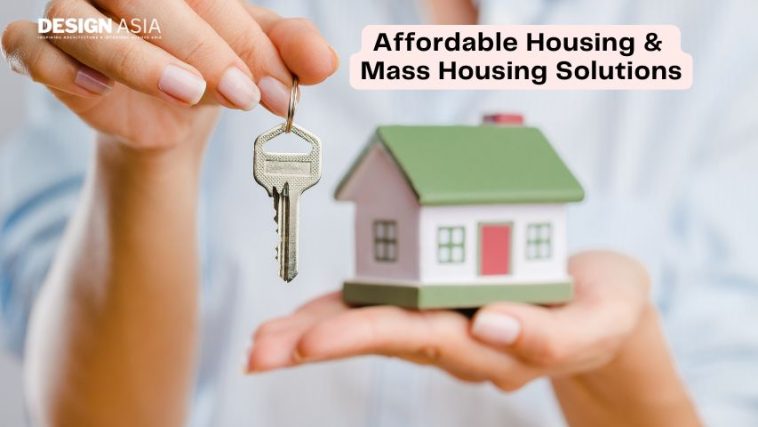Affordable housing is a crucial aspect of sustainable urban development, ensuring that low- and middle-income families have access to safe, decent, and affordable living spaces. As global populations continue to grow and urbanization expands, the demand for affordable housing has surged. Mass housing solutions provide a way to address this challenge by delivering large-scale residential developments that meet the housing needs of various income groups.
This article explores the significance of affordable housing, the challenges in its implementation, and various mass housing solutions being adopted worldwide.
Understanding Affordable Housing
Affordable housing refers to housing units that are reasonably priced and accessible to individuals and families within a certain income bracket. The affordability is typically determined based on a household’s income, ensuring that housing costs do not exceed a fixed percentage (usually 30-40%) of their earnings.
Key Features of Affordable Housing:
- Cost-effectiveness – Homes should be within financial reach for lower-income groups.
- Sustainability – Incorporation of green building materials and energy-efficient designs.
- Accessibility – Located near essential services such as schools, healthcare centers, and transportation hubs.
- Scalability – Housing models should be replicable and adaptable to different regions and populations.
Challenges in Affordable Housing Development
While affordable housing is a necessity, several challenges hinder its effective implementation:
- High Land Costs: Urban land is expensive, making it difficult for developers to construct low-cost housing in prime locations.
- Funding and Financing Issues: Limited government budgets and lack of private sector investment can slow down housing projects.
- Regulatory Barriers: Lengthy approval processes, complex zoning laws, and building codes often delay construction.
- Infrastructure Gaps: Affordable housing projects require access to water, electricity, roads, and sanitation, which can be costly.
- Social Stigma: Some communities resist affordable housing projects due to concerns over property values and neighborhood dynamics.
Mass Housing Solutions
Mass housing solutions aim to construct large-scale housing developments that accommodate a significant number of residents while keeping costs low. These solutions leverage innovative construction techniques, efficient urban planning, and government policies to make housing more accessible.
1. Government-Backed Housing Schemes
Many governments implement subsidized housing programs to provide affordable homes for low-income families. Examples include:
- Pradhan Mantri Awas Yojana (PMAY) – India: Aims to provide “Housing for All” with subsidies and low-interest loans.
- Section 8 Housing – USA: Offers rental assistance to low-income households.
- Social Housing Programs – UK & Europe: Government-funded projects providing affordable rental homes.
2. Public-Private Partnerships (PPPs)
Governments collaborate with private developers to build affordable housing by offering incentives such as tax breaks, reduced land costs, and relaxed zoning laws.
3. Prefabrication & Modular Construction
Prefabricated and modular housing involves manufacturing building components off-site and assembling them on location. This method reduces construction time and costs while maintaining quality.
4. Vertical Housing & High-Density Developments
Developing high-rise apartment buildings maximizes land use, especially in urban areas with limited space. These developments often include mixed-use facilities with residential, commercial, and recreational spaces.
5. Slum Redevelopment & Upgrading
Instead of demolishing informal settlements, governments and NGOs are working to improve them by providing better infrastructure, sanitation, and legal property rights.
6. Smart Cities & Sustainable Housing
Technology-driven smart housing solutions integrate renewable energy, efficient waste management, and digital connectivity to create sustainable living environments.
Affordable housing and mass housing solutions are essential for creating inclusive, livable cities. Governments, private developers, and communities must work together to overcome challenges and implement scalable, cost-effective housing solutions. By adopting innovative construction techniques, leveraging public-private partnerships, and ensuring sustainable development, cities can provide safe and affordable homes for all.


